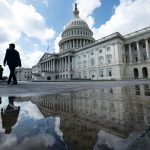Credit Sesame’s personal finance news roundup August 3, 2024. Stories, news, politics and events impacting personal finance during the past week.
Federal Reserve leaves interest rates unchanged
The Federal Open Market Committee (FOMC) concluded its recent meeting leaving interest rates unchanged. The FOMC is the subgroup of the Federal Reserve that makes interest rate decisions. The Fed has signaled that it will cut interest rates once by the end of this year. In their statement following this meeting, the FOMC acknowledged that inflation has been easing. However, the statement said that before the FOMC cuts rates, it needs to have more confidence that inflation is moving towards its 2% target. See FOMC statement at FederalReserve.gov.
Employment grew modestly in July 2024
Total US employment increased by 114,000 in July. This continues a long stretch of employment growth. However, it represents a much slower pace of growth than the average of 215,000 over the past year. Also, employment numbers for May and June were revised downward by a combined 29,000 jobs. The lackluster job growth fuels speculation that the Fed will cut interest rates in its September meeting. See employment report at BLS.gov.
Big bank bans BNPL payments
Chase, the largest bank in the United States, has announced that its customers will no longer be allowed to use its credit cards to make payments on buy-now-pay-later (BNPL) plans. The ban will become effective October 10. Chase says the BNPL payments ban is consistent with an existing ban on using their cards to pay off other forms of debt. Doing so means customers are shifting debt around rather than paying it off. That can worsen their debt problems and make them a higher risk for Chase. Also, Chase has a competing “pay over time” product with characteristics similar to those of BNPL plans. See article at MSN.com.
Consumer sentiment slipped in July 2024
The University of Michigan’s Index of Consumer Sentiment continued a recent downward trend in July. The index has declined for four consecutive months, though July’s drop was slight. The overall index was down by 2.6% in July and 7.1% over the past 12 months. Consumers are gloomier about current conditions than they are about the near future. Sentiment about current conditions fell by 4.9% in July and is down by 18.0% over the past 12 months. However, the Index of Consumer Expectations fell by just 1.1% in July and is up by 0.7% over the past year. See details at UMich.edu.
Americans turn to AI for help with finances
A BMO Financial Group survey found that Americans increasingly use artificial intelligence (AI) to assist with financial decisions. The survey found that 37% of Americans use AI to make financial decisions. Specific uses include financial education, budgeting, identifying investment strategies, building savings, and financial planning. Young adults are especially prone to using AI in financial decision-making, with 61% of Generation Z using it as a tool. See news release at PRNewswire.com.
Consumer appetite for credit remains strong despite rising delinquencies
The latest VantageScore CreditGauge report found that consumers continue struggling to make their debt payments. Both early-stage and late-stage delinquency rates rose during June. Despite these troubles, there were clear signs that consumers are eager to take on more debt. Credit originations rose faster this year for personal loans, credit cards, mortgages, and auto loans. Also, both balances and credit utilization rates continued to grow last month. See details at VantageScore.com.
Home prices slowed but still rising
The S&P CoreLogic Case-Shiller National Home Price Index rose by 5.9% for the 12 months ending in May 2024. That’s a slightly slower annual growth than the 6.4% rise through April. All 20 metropolitan markets tracked by the index posted increases for the latest month and 12 months. The New York City market had the highest growth over the past year, at 9.4%. Portland, OR, was the slowest-growing market, with an average price increase of just 1.0% over the past year. See details at SPGlobal.com.
Lower-income households fastest growing homeowners segment
A Federal Reserve Bank of Minneapolis report found that despite high home prices and rising mortgage rates, homeownership in the United States continues to grow. Homeownership among households in the lowest fifth of income has grown especially quickly since 2015. This group includes households that earned less than $30,961 in 2023. The homeownership rate among these households grew by 6% from 2015 through 2023. That puts the homeownership rate for these households at 47.1%, or close to the all-time high of 47.7% reached in 2005. See report at MinneapolisFed.org.
Weekly news headlines from Credit Sesame
Read the full article here

















